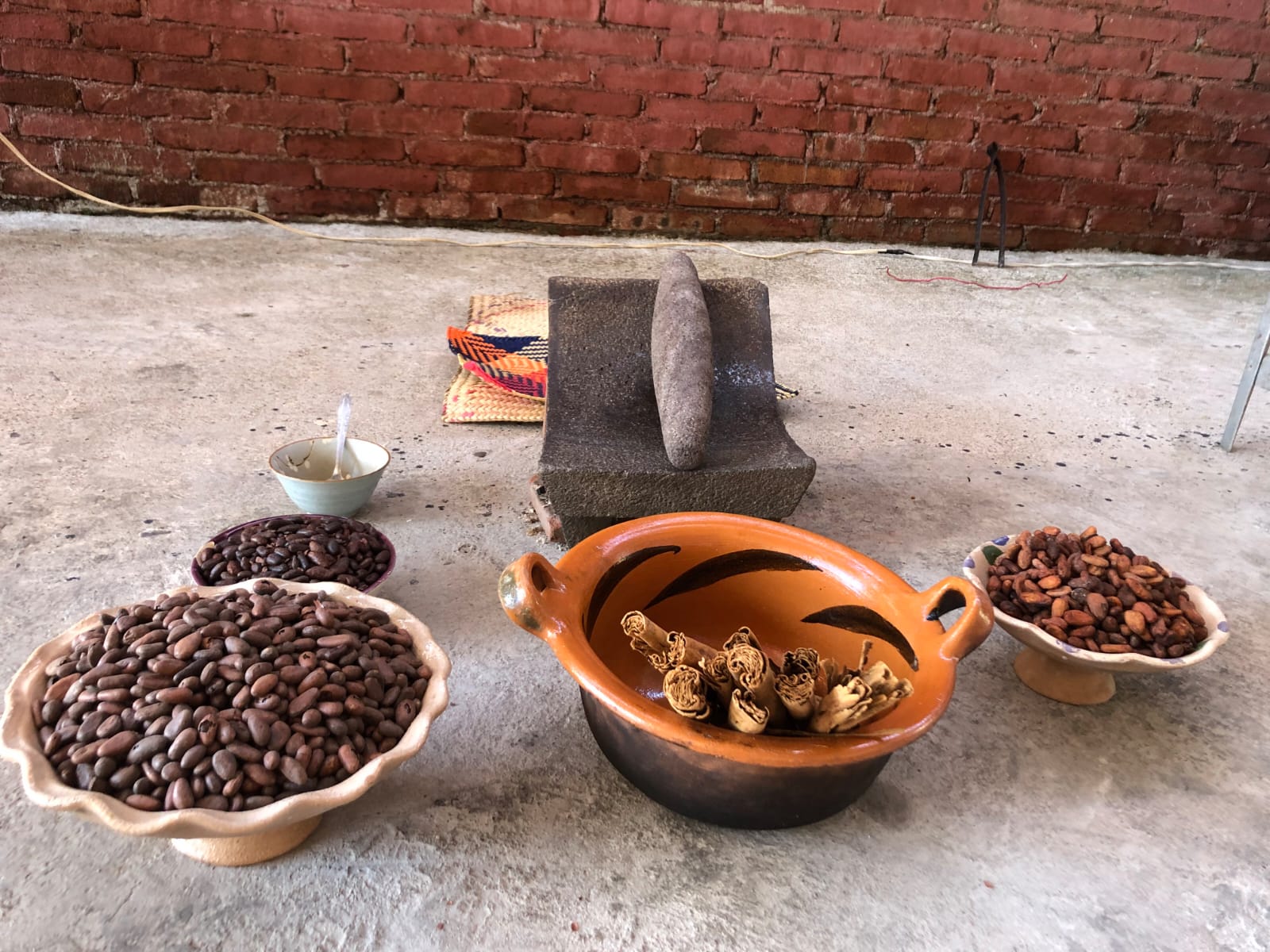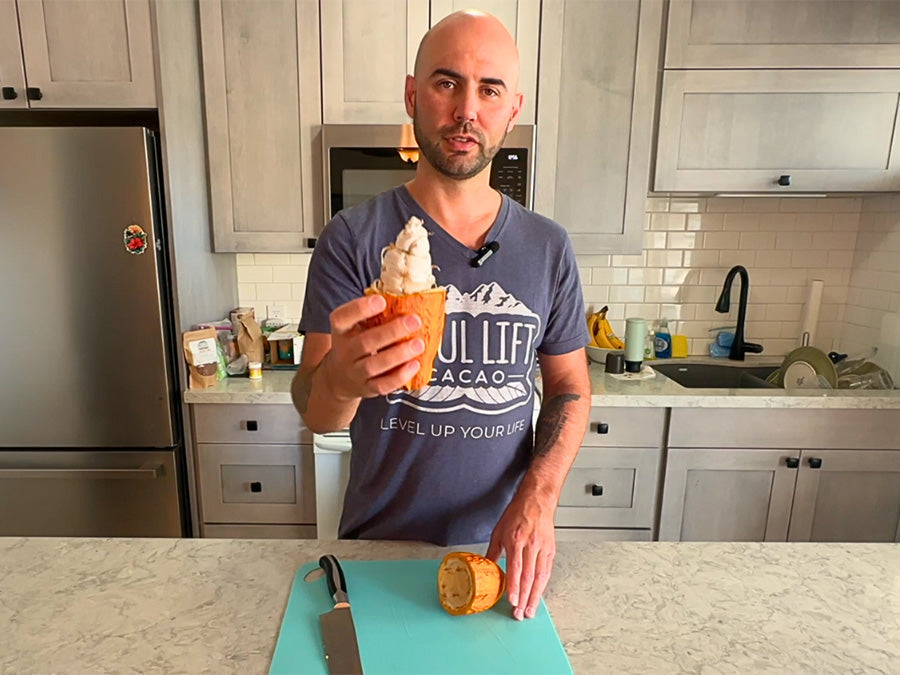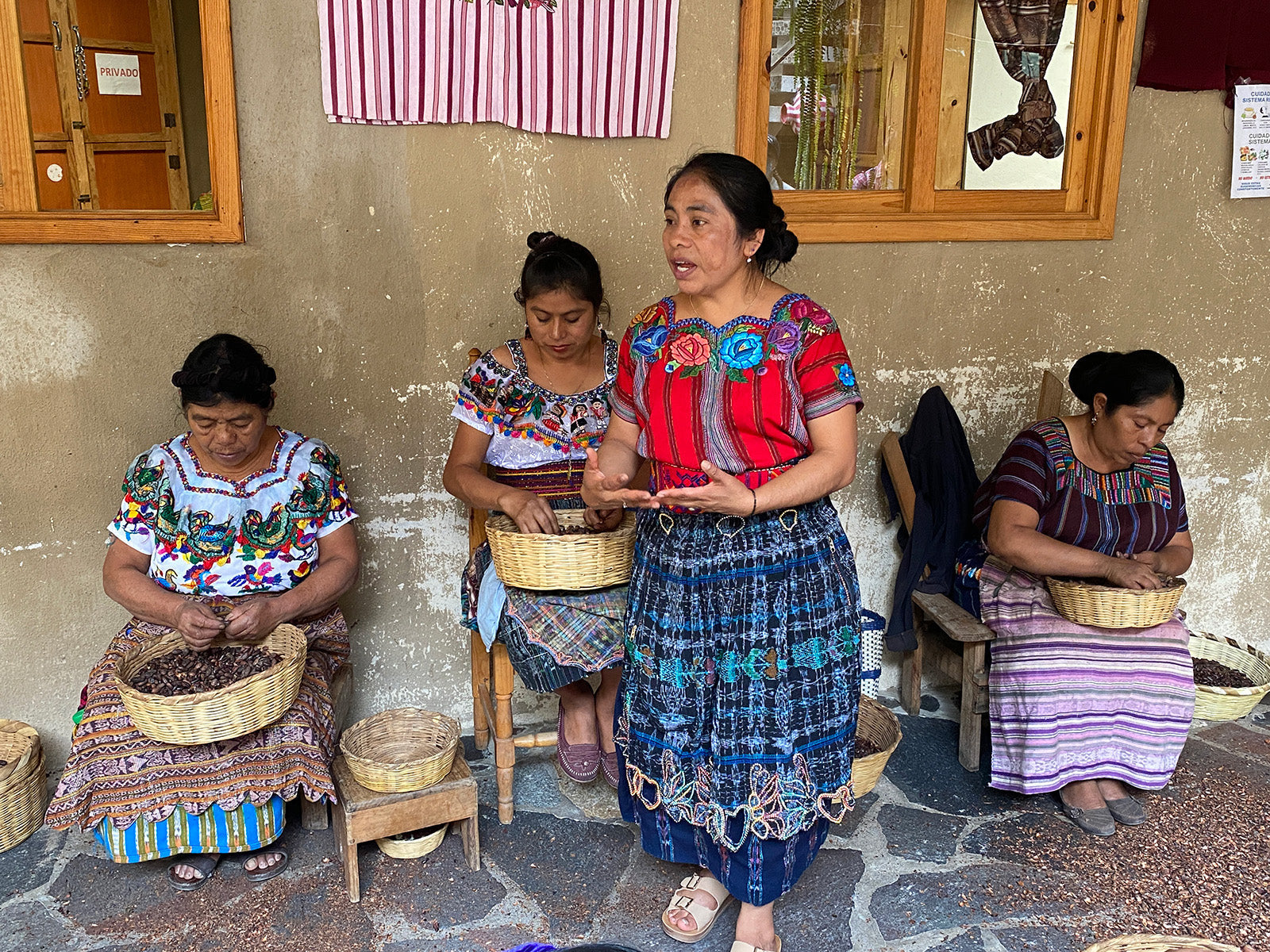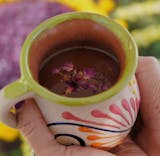(First published 1/24/2023. Last updated 3/13/2024.)
For the better part of a decade, people in the cacao field told us that Guatemalan ceremonial cacao has a negligible amount of caffeine.
So that’s what we told people when they asked.
We fully believed it, because cacao feels different than products that have caffeine but no theobromine (coffee, energy drinks, etc).
It has always seemed like cacao offers a somewhat gentler energy that sustains for a longer time, with no crash or cravings.
There’s very little data out there about the content of caffeine and theobromine in 100% pure, artisanal, minimally processed cacao.
So in 2022 we had all our cacao varieties tested. The results surprised us, to say the least.
Both the caffeine and theobromine levels differed a lot between varieties, even between ones grown in the same region.
In general, there was a correlation between the caffeine and theobromine content. A variety either had more or less of both.
There’s always more theobromine than caffeine in any given variety. But the caffeine was always more than negligible.
In 1oz of pure ceremonial cacao (about how much goes into an 8oz prepared drink), the amount of caffeine ranged from around 60-145mg, and theobromine ranged from around 300-470mg.
To put the caffeine numbers in perspective, a serving of dark chocolate has 20-30mg, black tea has 50-60mg, brewed coffee has 100-120mg, and traditionally prepared yerba mate has 180mg. [1, 2, 3, 4, 5]
Theobromine appears in dark chocolate in the range of 140-230mg per serving, so not as much as ceremonial cacao. [5] Yerba mate does have a small amount of theobromine, in the range of 55mg. But tea has a negligible amount (less than 5mg per cup), and coffee reportedly has none. [3, 6]
Like we said, most people report cacao feeling different. But what’s strange is that the numbers in cacao don’t necessarily dictate how energizing it will feel. The “activating” potential that a variety offers is highly subjective (i.e., different from person to person).
For example, across the ones we tested, Lavalove Cacao has one of the lowest caffeine counts and a moderate amount of theobromine. Yet it’s one of our most popular for ceremonial use and is generally reported to be a “strong” cacao.
Dark chocolate likely has a lower range due to many factors such as strain of cacao (which relates to the country of origin), the heavier processing it undergoes, etc. But that also means other beneficial compounds like antioxidants also tend to occur in smaller amounts.
As we mentioned, ceremonial cacao feels quite different than drinks with caffeine but little to no theobromine. Theobromine works on the cardiovascular system and is a vasodilator, which means it causes blood vessels to expand, thereby lowering the blood pressure.
The half-life of theobromine (how long it stays active in the body, 7-12 hours) is longer than that of caffeine (2.5-5 hours). [7]
There appears to be very minimal research on the synergistic effects of caffeine and theobromine. What research we’ve found is mostly about self-reported of calmness vs alertness, and about effects on blood pressure – but nothing about how cellular activity might be different for caffeine with or without the theobromine.
What’s certain is that theobromine doesn’t seem to exist in large amounts in nature without caffeine also being present.
Based on this lab testing, we've come to believe that if cacao has less than 50mg of caffeine and 300mg theobromine per serving, it can't really be considered authentic "ceremonial cacao."
And while coffee and tea are undoubtedly considered special around the world, and some places have tea ceremonies, neither of them are really considered “plant medicines” in the sense that they can be part of a spiritual journey.
Cacao can be enjoyed in a spiritual ceremony or as part of our daily ritual and nutrition. We still wholeheartedly believe that cacao is a viable alternative to energy drinks and beverages that have caffeine but no theobromine.
But this research has certainly put things into perspective. We’ve realized that caffeine isn’t a “villain” like we had come to believe. It’s actually part of the medicine that is ceremonial cacao!
That’s if we use it with moderation. After all, we do believe that our society abuses caffeine to bypass our natural need for rest and relaxation.
We hope this new data and perspective guide you in choosing which type of cacao is best for you. We sincerely apologize to our community for getting it wrong on this topic before.
We’re always willing to correct information when there’s scientific evidence.
And you can count on us to continue verifying claims that we and others make about cacao.
We have now published this data on the product pages for all pure cacao varieties and drinking chocolate blends that we offer. You can find those amounts on the table below, followed by a comparison with other products containing caffeine and theobromine.

NOTE: Our pure cacao varieties are El Cielo, Fuego, Heart of the Earth, La Noche, Lavalove, Mitla, Parcelitas, Siguacan, and Tuk Tuk.
Here's the data we could find on other products containing caffeine, for comparison:

REFERENCES
[1] Zugravu, et al., “Dark Chocolate: To Eat or Not to Eat? A Review,” p. 1389. The authors write that dark chocolate “contains caffeine (15 mg/20 g) and theobromine (100–150 mg/20 g).” Per 28g amount, that’s 21mg caffeine and 140-210mg theobromine. But the authors don’t list the percentage of cacao in the chocolate. Also, dark chocolate doesn’t usually come in 28g servings, but that’s typical for ceremonial cacao so I have standardized the amounts for comparison. - https://pubmed.ncbi.nlm.nih.gov/31200790/
[2] Eren, “Evaluation of Theobromine Content and the Relationship Between Cocoa Percentages in Dark Chocolates,” p. 521. Bittersweet dark (60-80% cacao content) showed 8.19 mg theobromine per gram of product, which calculates to 229.32 mg in a 28g serving. - https://ffhdj.com/index.php/ffhd/article/view/1141/1940
[3] Black tea testing - https://www.bioprofilelabs.com/TheobromineContentCoffeeTeaInstantCocoa.htm
[4] Mayo clinic caffeine data - https://www.mayoclinic.org/healthy-lifestyle/nutrition-and-healthy-eating/in-depth/caffeine/art-20049372
[5] Yerba mate - https://yerbamateculture.com/yerba-mate-caffeine-content/
[6] 1988 Report on Caffeine and Theobromine in Coffee and Tea
[7] Half-life of caffeine and theobromine - https://www.ncbi.nlm.nih.gov/pmc/articles/PMC3672386/
*The content on this page is for informational or educational purposes only, and does not substitute for professional medical advice or consultations with healthcare professionals. Health statements about cacao and chocolate have not been evaluated by the Food and Drug Administration. Our products are not meant to diagnose, treat, cure, or prevent any disease.
Related Posts

A blanket tariff on Mexican imports would have a devastating effect on the cost of Mitla ceremonial cacao, which is grow
Read More
Most people never see what comes before a cacao block, or even a drink. And it's a shame, because it can help us appreci
Read More
The price of Heart of the Earth cacao has risen a lot recently. Some factors are the same for all our cacao. Yet this un
Read More







